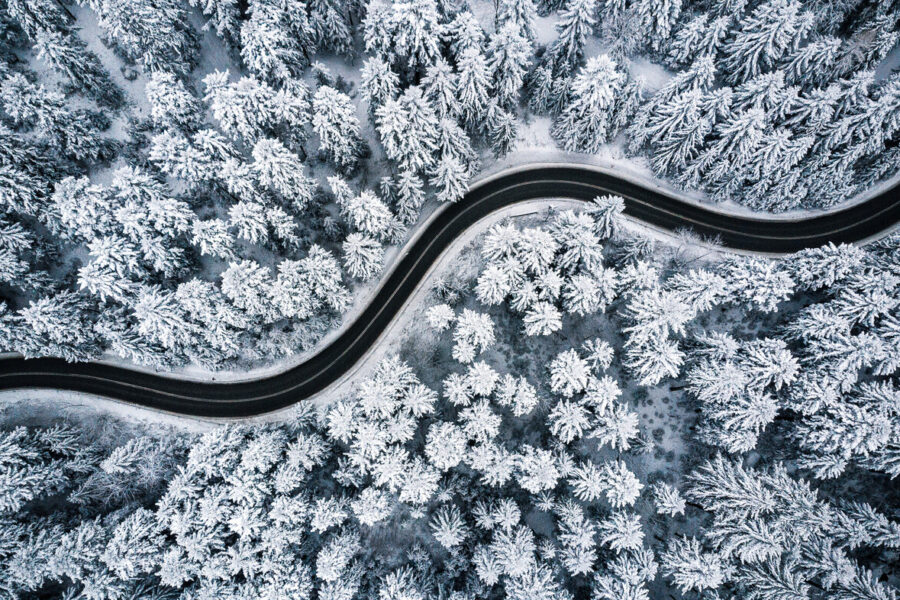Snow measurement
precise, zero-maintenance snow sensors that reliably measure record-breaking snowfall

Monitoring snowpack to manage flood risk & forecast water supplies
For snowpack-reliant watersheds, sustaining water supply depends on understanding snowmelt.
Three major factors better predict the impact of climate change on critical snowmelt-driven water supplies:
- amount of total winter snowfall is available at the end of the winter
- rate at which snow melts
- when snow melts
Snow data helps water managers and reservoir operators anticipate the amount of spring and summer runoff that will move through water storage and delivery systems as temperatures warm. The information is vital to drinking water districts, farmers, cities and flood control systems, especially in vulnerable and already flooded regions.
Moreover, scientists are closely examining the relationship between snow and fire. In many Western mountain forests, Colorado State University researchers have found that more fires are leading to faster snowmelt and reduced water, which are drying out soil and plants — making forests more flammable.
Your benefits
Portfolio highlights
Snow depth sensors
Snow depth sensors
Choose ultrasonic radar technology or advanced laser technology. Both non-contact sensors are ideal for continuous monitoring of snow depth without compromising the snowpack. Understand strong regional & temporal weather fluctuations with regular snowpack measurements. Pair either maintenance-free, low power sensor with solar-power measuring stations for even more reliability.
USH-9 radar
Ultrasonic radar sensing delivers accuracy with a 1. mm resolution. Get precise snow measurements of up to 10 m (33 ft), even with snow drift conditions. The IP64 sealed ceramic membrane protects the advanced measuring cell against ice and snow. Note: Temperature measurement range -40°C to +60°C (-40°F to +140°F), resolution 0.1 °C.
LSH-10 laser
Opto-electronic range-finder technology captures data with 0.1 mm resolution. Like the radar, record snow measurements of up to 10 m (33 ft) during snowfall. High-energy laser pulses overcome difficult reflection conditions, such as powder or fresh snow cover. The IP66 anodized aluminum housing is able to withstand harsh environmental conditions. Note: Temperature measurement range -40°C to +50°C (-40°F to +122°F).
Snow drift sensor
Snow drift sensor
This ultra-robust acoustic instrument measures solid particle flux intensities and wind speeds.
The device is totally sealed with no moving parts, ideal for deployment in harsh weather.
The cylindrical sensing part of the instrument comprises an anti-abrasion, anti-adhesion and anti-rime coated tube supported by two strong stainless-steel arms.
The impact of drifting snow and the friction of laminar wind induces a change in internal acoustic pressure. The excitation by snow and wind is discriminated by a specific acoustic, mechanical and electronic design for high accuracy data.
Snow melt analyzer
Snow melt analyzer
This instrument detects early melting processes in the snow and in turn, the water run-off can be ascertained and used for flood forecasts or for water management.
Use the snowmelt analyzer to record snow water equivalent (SWE), snow density, liquid water content and ice content.
Installation and configuration are simple; no calibration is necessary.
Pair this low-energy consumption sensor with solar-power measuring stations for even more reliability.
Snow pack analyzer
Snow pack analyzer
Determining snowpack properties can be challenging as they vary significantly in space and time.
This instrument measures the volumetric contents of ice and water within a snowpack sample.
Pair with the snow depth sensor to calculate the snow water equivalent (SWE) and snow density.
By measuring the complex impedance along multiple, 4.8 m long, ribbon-shaped sensors, this analyzer acquires area-averaged data about the snowpack at different depths.
The dual sensor combination establishes an automatic measurement system to continuously monitor snowpack development for hydrological, agricultural and other applications.
Snow pillow / snow scale
Snow pillow / snow scale
Also known as a fluidless snow pillow, this instrument precisely measures snow water equivalent (SWE) using the measuring principle of load cells.
The scale consists of 7 perforated plates; each plate measures 31.44 in x 47.16 in. A center panel is surrounded by 6 panels, allowing water to percolate. Water percolation minimizes thermal differences between the center panel and surrounding panels, buffering the SWE measurement in the center panel from stress concentrations that develop along the perimeter.
The snow pillow delivers accurate measurements — even during periods of rapid snow settlement after large snow accumulations.
A broad outer frame of plates minimizes the effects of ice bridging commonly experienced late in the measurement season. In addition, lightweight aluminum materials minimize thermal resistance — improving heat flow throughout the device for better emulation of natural conditions.
Installation and implementation in the field, on the ground, is quick and easy.